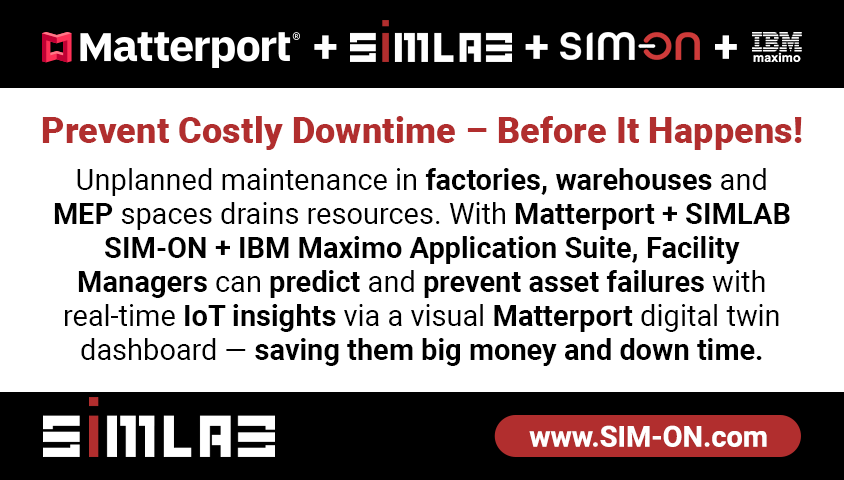Robotic Imaging: LiDAR Scanning’s Role in Historic Preservation17513
Pages:
1
 WGAN Forum WGAN ForumFounder & WGAN-TV Podcast Host Atlanta, Georgia |
DanSmigrod private msg quote post Address this user | |
 Image courtesy of Robotic Imaging Video: Robotic Imaging: LiDAR Scanning’s Role in Historic Preservation | Video courtesy of www.WGAN-TV.com | 21 September 2022 WGAN Forum Podcast | Episode: #138 The following Robotic Imaging blog post by Robotic Imaging Chief Marketing Officer Natalie Perri is reprinted with the permission of Robotic Imaging. www.RoboticImaging.com Robotic Imaging: LiDAR Scanning’s Role in Historic Preservation With multiple firms and organizations dedicated to preserving historic architectural sites, new technological developments play a critical role in how this industry preserves these special spaces. Laser scanning and its new expansive developments, is unquestionably the most exciting and opportunistic aspect of historic preservation. Laser scanning has quickly become a critical key tool to document and later analyze and preserve historic sites for future generations to enjoy. Naturally, the structural integrity of buildings tend to degrade over time. Preserving historic buildings always has unpredictable risks. But, through detailed data sets, produced by point cloud data extracted from an initial laser scan, these sites can better be restored and foresee potential issues. Unfortunately, some historical sites have already perished. LiDAR technology and laser scanning can work beyond restoration work. Point cloud data can be used to recreate and reconstruct an original environment. People would have the capability to experience a site as it formerly was. Understanding the Term LiDAR "Light detection and ranging" or "laser imaging, detection, and ranging," is in short referred as LiDAR which clearly explains itself as a tool that releases pulsed light waves. The sensor catches the waves that bounce off objects and return. The distance traveled by each pulse is calculated by the sensor using the time taken by each pulse to return. After being repeated millions of times per second, ultimately a real-time 3D image of the target is created. Being one of the most revolutionary techniques in current times, it is being used in multiple fields, including agriculture, archeology, autonomous vehicles, navigation and astronomy. Real Estate and LiDAR Home is the most valued possession of almost every being; therefore, accuracy in valuations is a must. Lidar, or 3D property scanning, is a complete technological revolution when it comes to real estate imaging. Architecture was one of the first industries to adopt 3D from 3D building plans and executions, thus being one of the major users of 3D scanning for retail services. Let's look at how this ground-breaking technology is helpful in the world of real estate. 1. Virtual Tours to Construction Monitoring No need to take all the hassle of visiting the construction site physically. Just sit back, relax and let the technology take over. Whether it's a residential plot or a commercial project, Whether you are the first owner or a mediator, 3D laser scanning services are equally beneficial for all. You can inspect the site, and building conditions, monitor the work being done and even compare with counterparts, all within the comfort of your home or workplace. Thus, it successfully saves your time, effort and money that would otherwise have been spent on the commute. 2. Absolutely Accurate LiDAR scanning is exact and accurate. It can detect small objects and make detailed measurements. It gives a clear-cut picture of the physical structure. Not a single corner could escape its precise eye, resulting in a well-defined, high-resolution image. Homeowners, developers as well as retailers all can equally benefit from this amazing technology. Hence, if you have to supervise your dream project, impress your client or enjoy the construction of your dream house, the LiDAR scanning service serves the purpose. 3. No Chance of Human Errors Whenever something is done manually, there is no way to strike out the chances of human errors. In remote sensing we don’t actually measure things physically with our hands; instead, information is captured using sensors. Therefore, using LiDAR scanning not only saves labor costs but also saves the cost and hassle which could occur as a result of any human error. 4. User Friendly LiDAR is its own light source, so you don’t have to worry about the weather or environment. This technology offers great performance in all types of lighting and weather conditions. Moreover, it is portable, so it can easily be taken anywhere at your convenience. In Summary So, whether the industry needs to utilize point cloud data and scanning to strategically reconstruct a historic building or use it to create a virtual reality for others, laser scanning offers this industry incredible opportunities. LiDAR scanning is a quick, convenient, easy, yet affordable way to bring as-built to life. It is equally beneficial for people who want a 3D capture of real estate property, either for commercial, personal, or historical purposes. --- Source: This Robotic Imaging blog post by Robotic Imaging Chief Marketing Officer Natalie Perri is reprinted with the permission of Robotic Imaging. www.RoboticImaging.com |
||
| Post 1 • IP flag post | ||
Pages:
1This topic is archived. Start new topic?

















